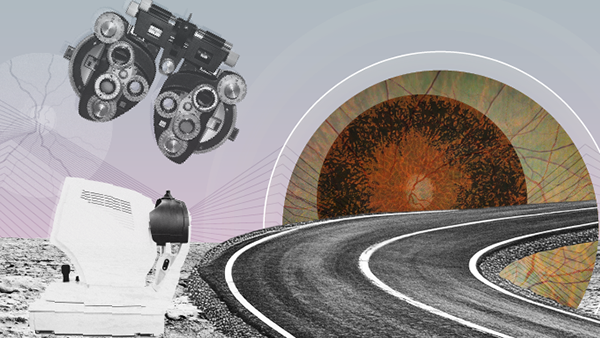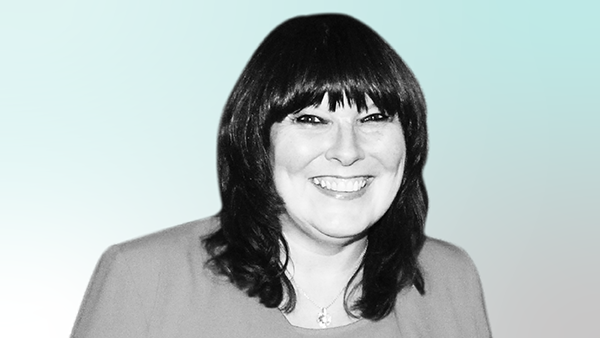You are viewing 1 of your 3 articles before login/registration is required
Changing Words for Changing Times
With more options available to treat presbyopia – a condition that is affecting patients earlier than ever before, should clinicians modify their communication approach?
Eye care professionals should always be thinking ahead – proactively preparing patients for conditions likely to occur in their future. Such conditions include those stemming from their health, family history, an exam finding – or a naturally occurring developments, such as presbyopia and cataracts. Currently, I start the conversation about cataracts with patients in their mid-to-late 30s. I have been observing cataracts a generation earlier than I used to and, although this is significant, it doesn’t necessarily mean that it is going to be noticeable to patients early on. At the beginning, they should not be surprised if they notice some slight visual changes, including reduced night vision and more glare.
In addition to cataracts, I also inform my patients that I am seeing presbyopia earlier than ever before. Due to today’s visual demands and digital device use, the condition is coming on sooner. In the past, it was common to see changes start to occur around the ages of between 42 and 45, but now, that has lowered to as early as the age of 36. I advise patients around the age of 40 to be on the lookout, assessing how their eyes feel after reading a book for a while, working on their tablet or phone, and at the end of the workday. They may start to notice fatigue and the sense that their visual demands are causing increased stress on their eyes as they try to see both continually and clearly. Ultimately, the goal of this conversation is to spur my patients to pay attention because, despite the decrease in the average age of onset, we now have more and more creative ways to intervene than ever before.
Talk to those emmetropes
Emmetropes are a challenging group to reach because a large proportion of them either have not had an eye exam or do not visit an ECP all that frequently. This group in particular tends to wait until things get worse before they take action. I believe it is important to reach out and talk to these patients as soon as possible to let them know that, although they are currently fortunate to have excellent vision, it may not last forever! As we age, our eyes age, and the majority of people eventually need glasses or some form of corrective tool. Planting this seed within the minds of emmetropic patients is important because, when something does go wrong, they are often in denial. They tell themselves that there is no way they could ever need glasses, and convince themselves that there must be something else going on. We have ways of helping these patients earlier, when they do come to us, because they really struggle in terms of discomfort and productivity compared with myopes or hyperopes, who are more likely to be under the care of an ECP.
When it comes to treatment, I let patients know that there are multiple options available and that most patients use more than one. The technology of spectacle lenses has advanced past bifocal and trifocal to high-quality progressive lenses. Likewise, I have been successfully fitting multifocal contact lenses for many years; in fact, I currently have an 87-year-old first-time lens wearer. Age is not a factor. The third, and most recent option is the first-ever eye drop able to treat presbyopia. With just one drop, emmetropes may be able to free themselves from glasses or contact lenses. Depending on the refractive error and severity of the condition, the drop can be paired with glasses or contact lenses to provide more comfort and longer duration of clear vision, making their eyes and whole visual system feel younger again. This triad approach is what I aim to provide to almost 100 percent of my presbyopic patients.
It may also be useful to confide in patients that we are also in the same boat. Our bodies, sadly, do not age like fine wine, getting better with time. No, we tend to get worse! But in the same way that we fight decline in our own eyesight, we will try to help our patients fight it, too. Patients may also need reminding that the condition is progressive, so their prescription will have to be altered over time. It’s not just going to be one pair of glasses or contact lenses, plus eye drops, that will solve the issue for the next 40 years. It is going to be a journey that we will embark on – and we will overcome the challenges together.
Ideal patients?
In clinical practice, there will likely be some level of trial and error as we figure out for which patients presbyopia-correcting drops work the best and, in the same vein, whom they do not work for. There are also the considerations of how to teach patients to get the most out of the pharmaceutical. Setting expectations, as is always the case, is key, both for the efficacy of the drops and the fact that changes may be implemented – what I do now is a far cry from what I did in December 2021. Importantly, though, I do not limit my prescribing of the presbyopia treating drops to certain ages; they are offered to even my youngest presbyopes. Even if they are not quite ready for them now, they know they are an option that exists – perhaps for later use when their vision deteriorates further. I want the existence of these drops to become fixed within their memory.
Another reason to offer the drop to all ages is the fact that, even though there is a normative curve for the “typical” patient, at one end of that curve there are 45-year-olds who are really struggling and on the other, the occasional 58-year-old who has not yet experienced presbyopia. It’s almost impossible to know where people will lie on this normative curve until we administer drops. Older presbyopic patients, such as those over age 60, may not get three lines of visual acuity improvement at near in dim light, but they may also not need that. Instead, they may only require just a small depth of focus improvement so that they are able to see at dusk, in a restaurant, or have less glare issues and more comfort driving at night. For that reason, I also bring up this pharmaceutical option to adults who are older than the 40–55-year-old patients we enrolled in the GEMINI 1 and 2 clinical trials of the pilocarpine HCl ophthalmic solution 1.25 percent presbyopia treating drops (1, 2).
A full 30 days of use
Another important step in the process is asking patients to purchase a bottle of the drops themselves. With “skin in the game,” they are more likely to commit to the instructions that they are given, namely to use them in both eyes every single day for a full month before they decide if it delivers the quality-of-life visual benefit that will motivate them toward continued use. I do not believe they can make that informed decision until they use it in both eyes every day for a whole month. In the GEMINI trials, patients’ depth of focus was measured hourly at every visit, tracking improvement from day one through day 30 (1, 2). The data, presented at the 2022 ARVO meeting, showed that even at day 30, depth-of-focus measurements continued to improve. If patients stop using the drops one week into the first bottle, they will prematurely judge the effect.
Similarly, the drops are not a panacea and should not be treated as such. It is not as if when patients put the drops in, suddenly their vision goes from blurry to clear. Likewise, towards the end of the day, when the drops are wearing off, it is not a switch that makes vision instantaneously become blurry. When the drops are working, vision at near and computer distance is more comfortable. Then, later in the day, patients notice they start to develop forehead tension from squinting, as drops wear off.
There may be some confusion among ECPs as to whether patients require a different prescription for their glasses or contacts when using the drops – the answer is no. Patients continue with the same glasses or contact lenses that are working for them, as they often work synergistically with the drops. The caveat, however, is that multifocal contact lenses have relatively complex optics. Miotics shrink the pupil and, alongside some multifocal designs, this can be confounded optically with a small pupil size. This is an opportunity for future research to determine if certain lenses work better than others.
Where now?
For better success with presbyopia-treating drops, I believe the market should respond appropriately in two key areas. The first, mentioned earlier, is that the evidence highly suggests that patients need to commit to use for at least one month to properly evaluate the effects. The second is to perform a comprehensive ophthalmic examination with full funduscopic evaluation prior to prescribing miotics for presbyopia.
This article first appeared in The Ophthalmologist.
References
- C Lievens et al., “Extended depth of focus from AAGN-190584 in GEMINI 1 and GEMINI 2 pooled phase 3 studies,” Invest Ophthalmol Vis Sci, 63, 1812 (2022).
- touchOPTHALMOLOGY, “Christopher Lievens, ARVO 2022: GEMINI 1 and GEMINI 2 pooled phase 3 studies: extended depth of focus from AGN-190584” (2022). Available at: bit.ly/3yvzCFl
The New Optometrist Newsletter
Permission Statement
By opting-in, you agree to receive email communications from The New Optometrist. You will stay up-to-date with optometry content, news, events and sponsors information.
You can view our privacy policy here
Most Popular
Sign up to The New Optometrist Updates
Permission Statement
By opting-in, you agree to receive email communications from The New Optometrist. You will stay up-to-date with optometry content, news, events and sponsors information.
You can view our privacy policy here
Sign up to The New Optometrist Updates
Permission Statement
By opting-in, you agree to receive email communications from The New Optometrist. You will stay up-to-date with optometry content, news, events and sponsors information.
You can view our privacy policy here







